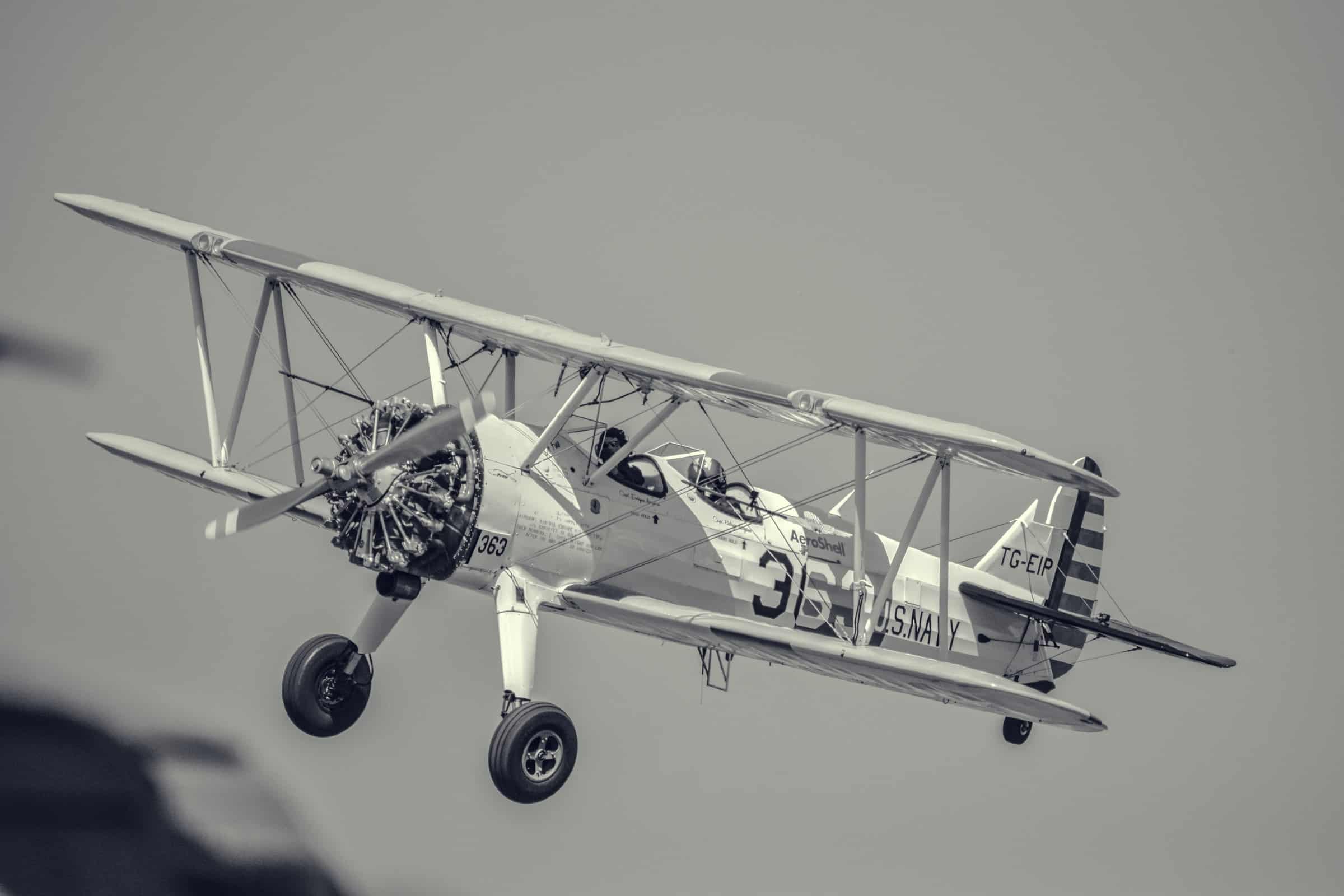A man’s desire to fly like a bird goes back to distant history. The father of aerodynamics, George Cayley, built in early 1803 a model airplane that could fly. The Wright brothers made the first documented flight on December 17 in 1903, with their self-propelled Flyer.
Planes can’t fly in space because the air is too thin, meaning there is not enough oxygen. Their engines are powered with fuel and that fuel needs oxygen to burn and produce thrust for the planes.
An airplane is an aircraft heavier than air, powered by an engine, which gains in flight by the dynamic reaction of the air around its fixed wings. In World War I, airplanes began to be used as weapons. Since then, with the evolution of technology, the planes were designed to gain more speed and be more agile. So, why can’t these modern planes fly in space?
Why can’t planes fly in space?
Airplanes can fly because air flowing through their wings hold them up. Their engines help them move forward, but it is the air that passes over and under the wings that hold it up. The airplane’s wings have a certain shape and are designed to help the air flowing through them.
Larger airplanes cannot fly higher than 12 kilometers. Anything above that has very thin air, which will not hold the plane. The air is not dense enough to support the plane. Although it will provide lift for the plane it cannot flow under and over the wings to keep it up.
Planes also use fuel to fly and that fuel cannot burn without oxygen. When the fuel is burning it produces thrust, helping the plane travel. If the plane goes higher, there won’t be any oxygen helping to burn the fuel.
Gravity also plays a big role in plane flight. As the air is flying through the planes’ wings, the gravity is pulling the plane down and thus creating a balance the plane needs to stay up.
Entering and exiting our atmosphere generates a lot of heat, so spacecraft have a protecting shield that withstands incredible heat. The heat that is generated is enough to melt iron. The average airplane is not designed and built to withstand that amount of heat.
But, a lot of designers thought of an airplane that can take off from a usual runway. The project of designing these airplanes is called Skylon and it was supported by the European Space Agency. It is designed so that it could carry up to 12 tons of cargo into space and then return to the same airport from which it departed.
They are also developing a hybrid ‘SABER’ engine that burns air while the Skylon is in the atmosphere, and after moving into space it becomes a rocket engine. After takeoff, the aircraft sucks air into the engines and mixes it with liquid hydrogen, and creates thrust for flight.
When reaching a speed of Mach 5.5 (5.5 faster than the speed of sound) at an altitude of 26 kilometers, where the air is too thin to be used, the engines begin to mix hydrogen with liquid oxygen.
What happens if a plane flies into space?
Each flight of an airplane consists of several different phases. From the initial position on the runway, there is a take-off phase, and immediately afterward, when the plane rises above the ground, the ascent phase begins, which lasts until the plane reaches the set cruising altitude.
The cruising phase is the calmest phase of flight and takes place at high altitudes, most often around 35,000 feet, or 10 to 12 km. When it approaches its destination, the plane starts to descend, and in front of the airport, it enters the approach phase and finally lands.
In the cruising phase, planes fly at high altitudes to avoid bad weather, reduce air resistance, speed up the duration of the flight, and save fuel. The altitude at which an airplane will fly depends on the type and size of the airplane. Turboprop planes cannot fly high because they need denser air, while jets can reach great heights.
Commercial planes can fly up to 42,000 feet (12,800 meters). The record was set by the supersonic plane Concorde, which could cruise up to an incredible 60,000 feet, which is more than 18,000 meters.
As said before, if the plane flies too high there wouldn’t be enough air to hold it up. The lack of oxygen will not burn the fuel, used to give power to the engine.
Could a fighter jet fly into space?
A fighter jet is an aircraft designed for combat and its purpose is to attack other aircraft. Fighter jets are mostly small, agile, and extremely fast. They first appeared in World War I.
Fighter jets don’t carry passengers, meaning that they are well equipped for the pilot’s safety and put the pilot’s security at the highest level.
Fighter jets can’t fly high because of their power source. They require air to work and fly properly. When the air gets too thin the engines would just shut down. Also, the equipment on the fighter jet is not accustomed to low and zero pressure. On that height level, humans require certain pressure suits.
Today, space flight of fighter jets is forbidden by the Space Neutrality Treaty. Space flight is the transport of people and cargo outside of earth atmosphere. The boundary of the atmosphere is usually considered to be an altitude of 100 km above the Earth’s surface.
Manned space flights take place by spacecraft or space stations, while unmanned flights are conducted by artificial satellites. Space flights are mostly classified into suborbital flights, flights in orbit around the Earth, flights to the Moon and interplanetary flights, and interstellar flights.
In any case, space flights begin with the launch of a spacecraft from a specially designed polygon on Earth. Launching and short-term flight in which the aircraft reaches high speed takes place with the help of launch vehicles or rocket planes with huge fuel consumption.
Planes that must escape the gravitational pull from the Earth require an insane amount of thrust. Fighter jets can reach high speed, but once the air becomes too thin, they cannot sustain.
NASA, the Air Force, and the U.S. Navy designed The North American X-15, a plane with the purpose of research. The X-15 set numerous speed and altitude records during the 1960s, including reaching the Kármán line (outer edge of space – 100 km altitude).
During his working life, he collected a huge amount of data on supersonic air currents, aerodynamic heating, human factors, and flight instruments used in the design of aircraft and spacecraft. The maximum speed the aircraft reached was 7,247 kilometers per hour.
Unfortunately, the aircraft reached its limit in1967, when it entered a hypersonic spin while descending. It broke apart at an altitude of 18 km and the wreckage was scattered across 130km2. The plane’s pilot, Michael J. Adams, sadly passed away.
Because the fighter jets are smaller and have smaller wings, they are extremely exposed to turbulence. Turbulence can sometimes be fatal for the aircraft, it is not handled correctly.
Why does NASA have fighter jets?
NASA is not only acquired to explore space; it is also responsible for Aeronautical research. That means that they do a lot of research on high speed and the high performance of the aircraft.
Even though NASA holds a fighter jet, they aren’t designed for combat. Instead, NASA calls them “chase planes”. They are operated by the Navy and Marine Corps, as well as the U.S. Air Force. They are used for training pilots and turning them into astronauts.
These planes are also used for monitoring other aircraft in flight. The pilots that fly chase planes are experts and they serve as an extra set of eyes. They keep a steady and constant radio communication. Some chase planes have cameras that film the monitored planes. Chase planes help future astronaut’s flying maintain skills.
The fighter jets that serve as chase planes no longer carry weapons. They are called fighter jets because they are built like ones. They are designed to reach high speed. Fighter jets were made to target an aircraft and fire. Today’s chase planes use the technology of targeting aircraft for research.
Chase planes work closely with research planes to investigate their maneuver skills. They track their flight time and take note of what needs to be modified. One of the reasons why chase planes are in constant radio communication is that they can talk with the engineering crew.
Sources:
https://spaceplace.nasa.gov/review/dr-marc-technology/rockets.html
https://www.bbc.com/future/article/20150601-nasas-fleet-of-fighter-planes
https://www.nasa.gov/centers/armstrong/images/X-Planes/index.html

